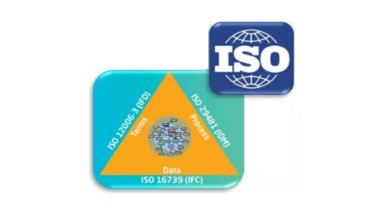Zigurat Global Institute of Technology
Blog / BIM & Construction Management
European BIM Standards
Categories

Building greater competitiveness and sustainability in the European AECO industry using BIM standards.
The first objective in BIM of the European standardization was achieved with the adoption of the first three European Standards. Toward the end of 2016, CEN / TC 442 met in Madrid to lay the groundwork for future work on BIM standards. José Carlos Lino, co-director and professor of the Master’s in Global BIM Management, presents the importance of BIM standards and how they are used in his own company BIMMS - Building Information Modeling & Management Solutions. José Carlos is a civil engineer and is one of the most recognized figures in the scope of competences in BIM and structural engineering. He is also a member of the European Committee for Standardization (CEN) for the European BIM Standards. https://www.youtube.com/watch?v=YUmLBmREb6s&t=30s
One way to structure building information
BIM is a process of structuring the information of a building. This refers to the collaborative mode of the digital representation of an object built to facilitate the construction process including buildings, bridges, highways and industrial plants. BIM facilitates design, construction and operation and maintenance by creating reliable bases for decision making. CEN / TC 442, secretariat by the Norwegian member, SN, aims to develop methodologies to define, describe, change, monitor, record and safely manipulate asset, semantic and process data. As a first action, CEN / TC 442 adopted three International Standards as European Standards:
- EN ISO 16739: 2016 (WI = 00442002)
Industry Foundation Classes (IFC) for data sharing in the construction and operation and maintenance sector (ISO 16739: 2013)
- EN ISO 12006-3: 2016 (WI = 00442003)
Building construction - Information organization on construction work - Part 3: Structure for object-oriented information (ISO 12006-3: 2007)
- EN ISO 29841-2: 2016 (WI = 00442001)
Building information models - Information Delivery Manual - Part 2: Interaction framework (ISO) 29841-2: 2012).
Possible adoption thanks to ISO collaboration
The adoption of these regulations was possible thanks to the collaboration and proximity between the international counterpart and the International Organizations for Standardization (ISO), formalized through the Treaty of Vienna. By adding the Industry Foundation Classes (IFC) in the CEN catalog, EN ISO 16739: 2016 becomes essential for the development of future BIM standards. These European regulations have been available since 19 October 2016 through 34 National Standardization Bodies (CEN Members) and their implementation is scheduled for 30 April 2017.
New standardization work in progress
Working groups are initiating the development of new standardization work to complement the European Standards mentioned above. By doing so, it becomes possible to address European specificities such as Construction Products Regulation (CPR, pdf format). One of the latest decisions made by the committee was adopted in 2017, in which the committee decides to register ISO 16757-2:2016 in it‟s active programme of work. During the third CEN / TC 442 meeting in Madrid, BIM Community, a Spanish information platform on BIM, interviewed CENELEC and CEN program manager Alexandre Beltrão and Tomi Henttinen representing our Finnish Member SFS within CEN / TC 422. https://www.youtube.com/watch?v=tCT9b-t7yx0 The construction industry is one of the largest sectors in Europe (10% of EU GDP and 20 million jobs). The work done through BIM's European Standardization ensures that we keep on track with the world's scanning. Learn more about standardization of construction work on the CEN website. Source: www.cencenelec.eu 



